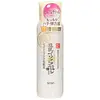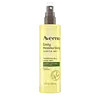What's inside
What's inside
 Key Ingredients
Key Ingredients

 Benefits
Benefits

 Concerns
Concerns

 Ingredients Side-by-side
Ingredients Side-by-side

Water
Skin ConditioningButylene Glycol
HumectantGlycerin
HumectantMethyl Gluceth-10
EmulsifyingMilk Ferment
Skin ConditioningGlycine Max Seed Extract
Skin ConditioningSoy Protein Phthalate
EmollientRetinol
Skin ConditioningSoy Isoflavones
Skin ConditioningRetinyl Palmitate
Skin ConditioningCeramide Ng
Skin ConditioningStyrene/Acrylates Copolymer
PEG-20 Hydrogenated Castor Oil
EmulsifyingPEG-60 Hydrogenated Castor Oil
EmulsifyingSorbitan Isostearate
EmulsifyingAlcohol Denat.
AntimicrobialGlyceryl Caprylate
EmollientCarbomer
Emulsion StabilisingXanthan Gum
EmulsifyingGlycosyl Trehalose
Emulsion StabilisingCyclodextrin
AbsorbentCeramide AP
Skin ConditioningCeramide NP
Skin ConditioningPEG-5 Soy Sterol
EmulsifyingGlyceryl Caprylate/Caprate
EmollientTrilaureth-4 Phosphate
EmulsifyingPullulan
Polyquaternium-51
Skin ConditioningPolysorbate 20
EmulsifyingPolysorbate 80
EmulsifyingLecithin
EmollientHydrolyzed Starch
HumectantSodium Hydroxide
BufferingHydrogenated Lecithin
EmulsifyingPhenoxyethanol
PreservativeMethylparaben
PreservativeWater, Butylene Glycol, Glycerin, Methyl Gluceth-10, Milk Ferment, Glycine Max Seed Extract, Soy Protein Phthalate, Retinol, Soy Isoflavones, Retinyl Palmitate, Ceramide Ng, Styrene/Acrylates Copolymer, PEG-20 Hydrogenated Castor Oil, PEG-60 Hydrogenated Castor Oil, Sorbitan Isostearate, Alcohol Denat., Glyceryl Caprylate, Carbomer, Xanthan Gum, Glycosyl Trehalose, Cyclodextrin, Ceramide AP, Ceramide NP, PEG-5 Soy Sterol, Glyceryl Caprylate/Caprate, Trilaureth-4 Phosphate, Pullulan, Polyquaternium-51, Polysorbate 20, Polysorbate 80, Lecithin, Hydrolyzed Starch, Sodium Hydroxide, Hydrogenated Lecithin, Phenoxyethanol, Methylparaben
 Reviews
Reviews

Alternatives
Ingredients Explained
These ingredients are found in both products.
Ingredients higher up in an ingredient list are typically present in a larger amount.
Lecithin is a term for a group of substances found in the cell membranes of plants, animals, and humans. They are made up of mixture of phospholipids.
This ingredient has emollient and emulsifying properties.
As an emollient, lecithen helps soften the skin and creates a barrier to keep moisture in.
As an emulsifier, it also helps prevent water and oil ingredients from separating. Lecithin can also help ingredients be better absorbed by the skin.
This is because the phospholipids in lecithin produce liposomes. Liposomes help other ingredients get through the skin barrier.
Depending on the source of this ingredient, lecithin may not be fungal acne safe. This is because some sources of lecithin come from soybean oil, which may feed the malassezia yeast that feeds fungal acne.
We recommend reaching out to the brand you are purchasing from to inquire about the source of their lecithin.
Some other names for this ingredient include soy lecithin and deoiled soy lecithin.
Learn more about Lecithin